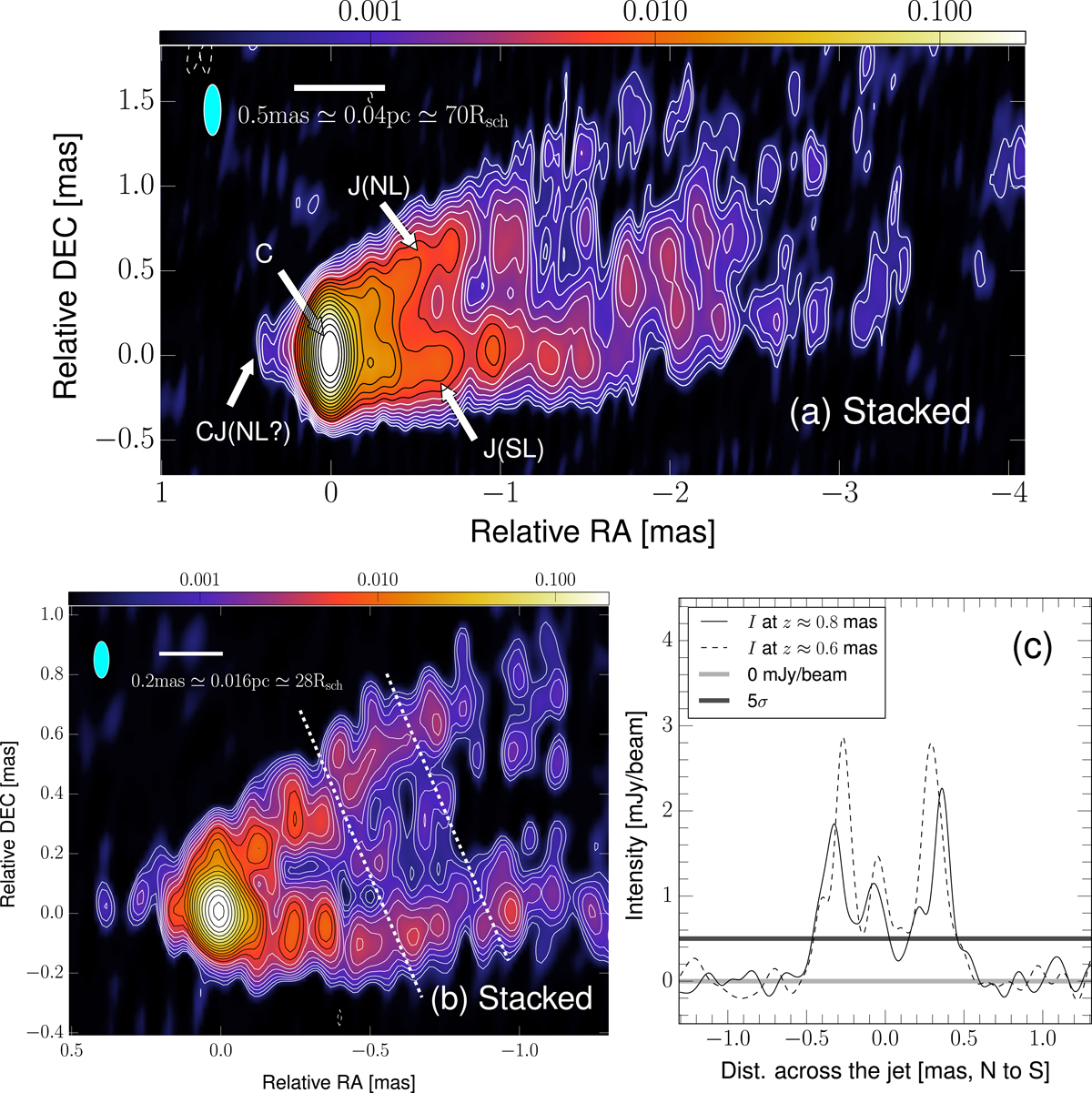I think the answer is a combination of your first two points.
There was an earlier study by Kim et al. (2018), also using Very Long Baseline Interferometry, to resolve the jet structure all the way down to a few Schwarzschild radii.
The resolution (about 100 $\times$ 50 microarcsec) was not quite as good as the Event Horizon Telescope ($\sim 20$ microarcsec), but the field of view of the presented images was much larger.
Below is one of the stacked images presented in that paper. It appears to show the jet being launched very close to the black hole, but the jet emission merges into the "core" emission (that we now know to be a bright photon ring), at a radius of about 200 microarcseconds and the jet appears to have a big opening angle and a width of some 600 microarcseconds where it is launched.

The whole EHT picture is only about 150 microarcseconds across, so I think the answer is that the image is too zoomed in to fully appreciate the jet structure and, since the "core" region appears to be much brighter in Kim et al.'s image (by an order of magnitude), then I suspect even if the EHT image were wider, we would struggle to see the jet on the linear brightness scale that the EHT papers have used.
In fact, these points are perfectly illustrated in Fig.5 of Paper IV of the EHT M87 data release. This Figure - reproduced below, shows how they included a model of the jet emission when modelling the EHT images.

The top images show various toy models that they input to test their imaging pipelines on a linear brightness scale. The middle images show a much wider region with the jet added and with a logarithmic brightness scale. Look how extended the jet is compared to the compact region in the EHT images and look at how faint it is in terms of surface brightness compared with the core region.


